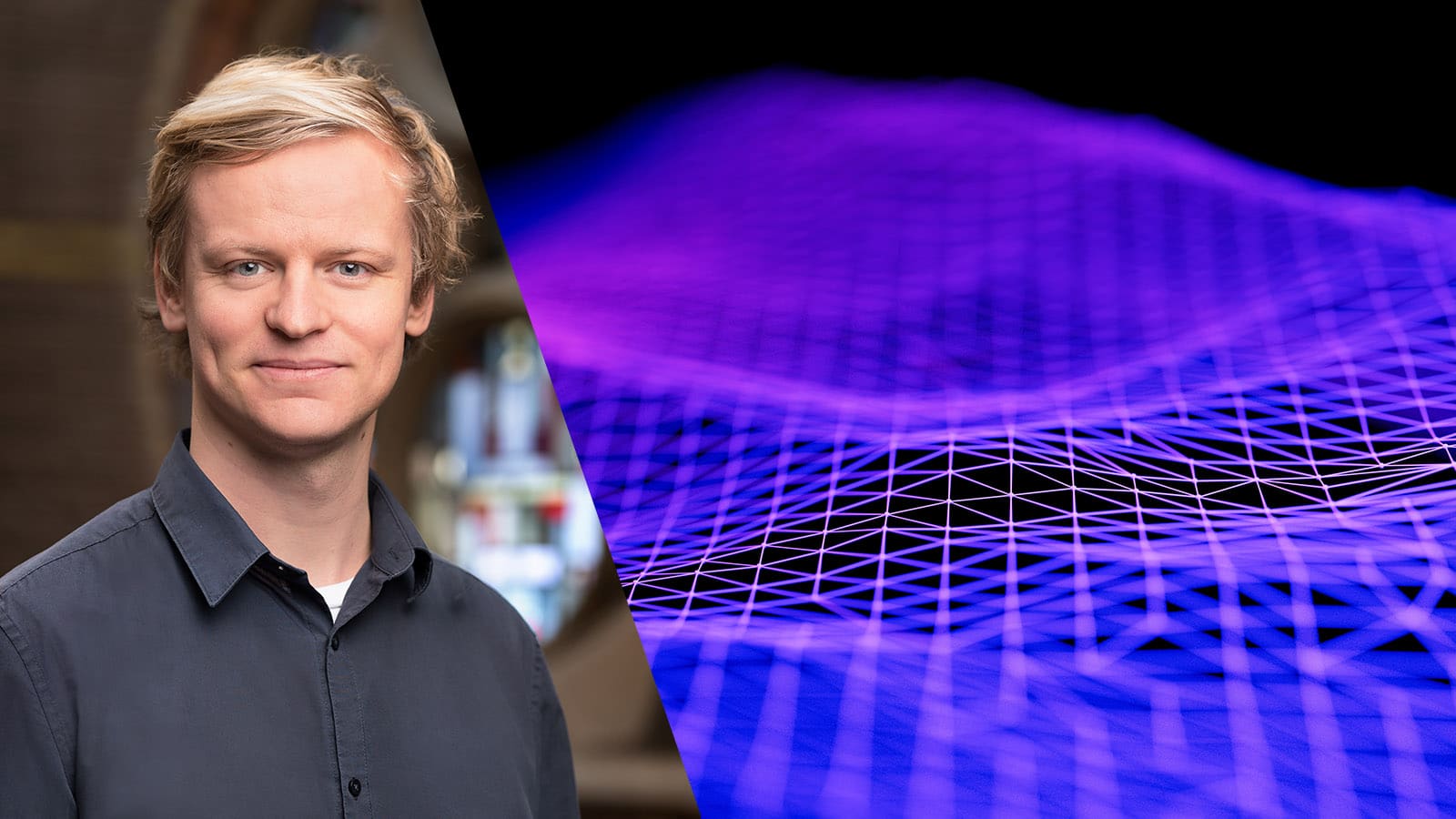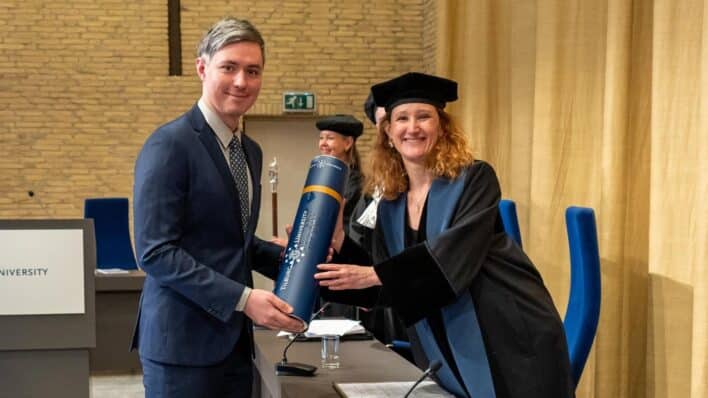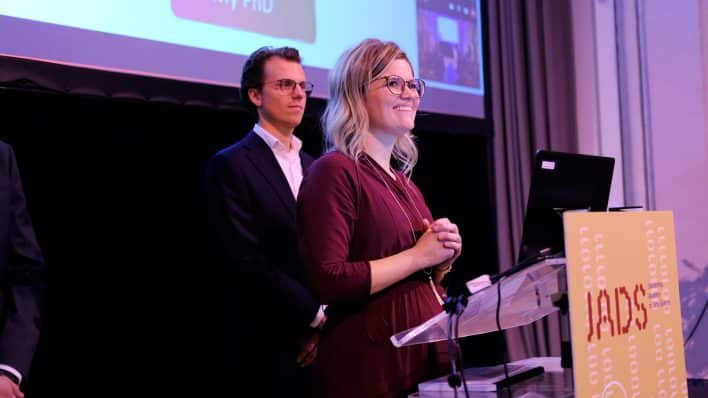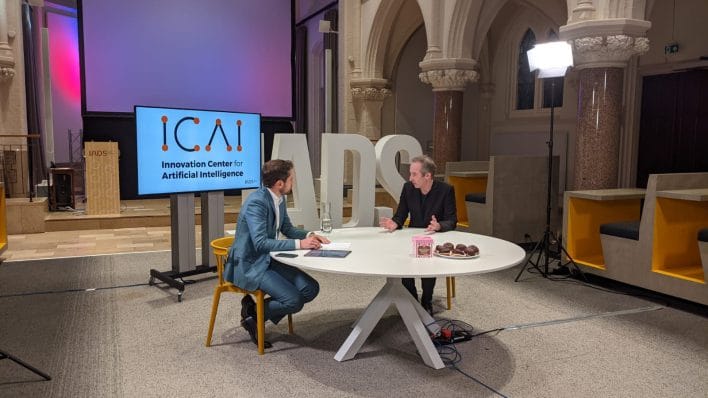From theory to real-world impact: why JADS is a perfect fit for Stefan Driessen.
Posted on
Stefan Driessen’s story shows how JADS nurtures talent from its early stages through groundbreaking research. Starting with a pre-master’s program, Stefan continued with a master’s degree in data science and entrepreneurship. His journey at JADS has been marked by milestones such as pioneering research on data meshes and data products and organizing the upcoming Industry Summit on Data Product Oriented Architectures. In this interview, Stefan reflects on his evolving role, how his experiences with JADS have shaped his career and his plans for the future.
How did you find JADS, and what attracted you to the Master’s program?
“ My background is in mathematics and physics, with a focus on abstract, theoretical work. After completing my bachelor’s, I wanted to shift towards something more applied. My mother recommended JADS, which was just starting at the time. She was involved in its development, and what drew me to the program was its promise to merge STEM sciences with entrepreneurship. The idea of having professors from both Tilburg University and Eindhoven University of Technology teaching a mix of their expertise was compelling. Unlike other universities where science and society are often treated separately, JADS offered an integrated approach that was exactly what I was looking for.”
What motivated you to also pursue our PhD at JADS?
“During my master’s, JADS was really excited about my thesis and encouraged me to continue the work as a PhD candidate. I also wanted to challenge myself by diving deep into a specific subfield and contributing to the forefront of human knowledge and technology. My research area, which focuses on data meshes and data products, was very new when I started in 2019. Now, having been involved from the beginning, I’m considered an expert. I work with large companies, advising them on how to transform their data landscapes. JADS offered me the unique opportunity to blend academic research with real-world industry applications, which was a major motivator for me.”
Can you tell us about your research?
“My research primarily focuses on data meshes and data products. When I started, these concepts were still emerging, but now they’re gaining traction. I work with large organizations, helping them transition to decentralized data landscapes that unlock the value of big data. I also link this work back to academia, publishing papers and presenting models that I develop in collaboration with industry partners. It’s a field that’s still very new, so I’m at the forefront, contributing to both its academic foundation and its practical application in industry.
Which moments at JADS were most pivotal for you?
“One significant moment was during the JADS Wildlife Hackathon, which was part of my pre-master program. We were tasked with predicting poacher locations in a South African wildlife park using sensors on animals. My team built a sophisticated technical solution, but we lost to another team that, despite delivering a technically flawed solution, provided a better presentation which engaged more with the judges. This experience taught me that it’s not enough to build great technical solutions; you also need to be able to convince others of their value. It was a pivotal lesson that influenced how I approach my work, focusing not just on the technical side but also on communication and impact.”
What are the key benefits of being part of the JADS community for researchers and students?
“The most unique aspect of JADS is the multidisciplinary approach combined with strong industry connections. JADS may be small, but it offers a wide range of interests and fields. Whether you want to focus on hardcore data science, business, or a combination of both, you can do it here. The community is very open and focused on useful science—almost everyone is involved in projects with external partners, whether it’s the Dutch government, companies, or other universities. This focus on practical application without sacrificing academic rigor is what makes JADS so special.”
In September, you’re organizing an Industry Summit on Data Product Oriented Architectures. What is the goal of this event, and how JADS bring companies and experts together?
“One of the exciting things about JADS is that they gave me the opportunity to dive into a completely new research area—one with little existing academic expertise. To explore this uncharted territory, I collaborated extensively with industry partners. Finding these partners took a lot of effort from my supervisor and me, but the existing JADS ecosystem made it easier. For instance, I approached KPN because I knew my colleagues were already working with them, while Mercedes-Benz came into the picture through my supervisor’s connections. Leveraging JADS’ network allowed me to conduct impactful research that was immediately tested and validated in real-world settings.
What I’ve learned from these collaborations is that companies struggle with implementing new concepts like data meshes and data product-oriented architectures because there’s a lack of practical guidance. While there are some abstract papers and blogs, they often don’t address how to implement these ideas in practice, especially within the strict regulatory environment in Europe. Companies are eager to find solutions, but the available advice is often too general or skewed towards selling a product rather than offering a genuine solution. What they really want is to exchange experiences with others facing the same challenges.”
How do you see your future after your PhD?
“That’s a great question, and I’m still figuring it out. My contract ends in December, and I aim to complete my analysis by then. Ideally, I’d like to stay involved in scientific projects, possibly through a postdoc if it’s something exciting and relevant. However, I’m also drawn to the industry side. A career in academia is tough, with hard work often not matched by financial compensation or recognition. In my ideal scenario, I’d find a balance where I manage research either from within a company or possibly from a university, but always with a strong connection to practical, real-world applications.
How do you see the role of JADS in the further development of data science and AI?
“Although my work is more focused on data engineering than data science and AI, what excites me about JADS is our approach to combining high-quality scientific research with practical industry applications. We’re not in the business of selling ready-made solutions like consultants. Instead, we aim to tackle fundamental questions with rigorous, scientific methods, while also addressing real-world problems that are valuable to companies. It’s a challenging balance to strike, but when it works, it’s impressive.”




